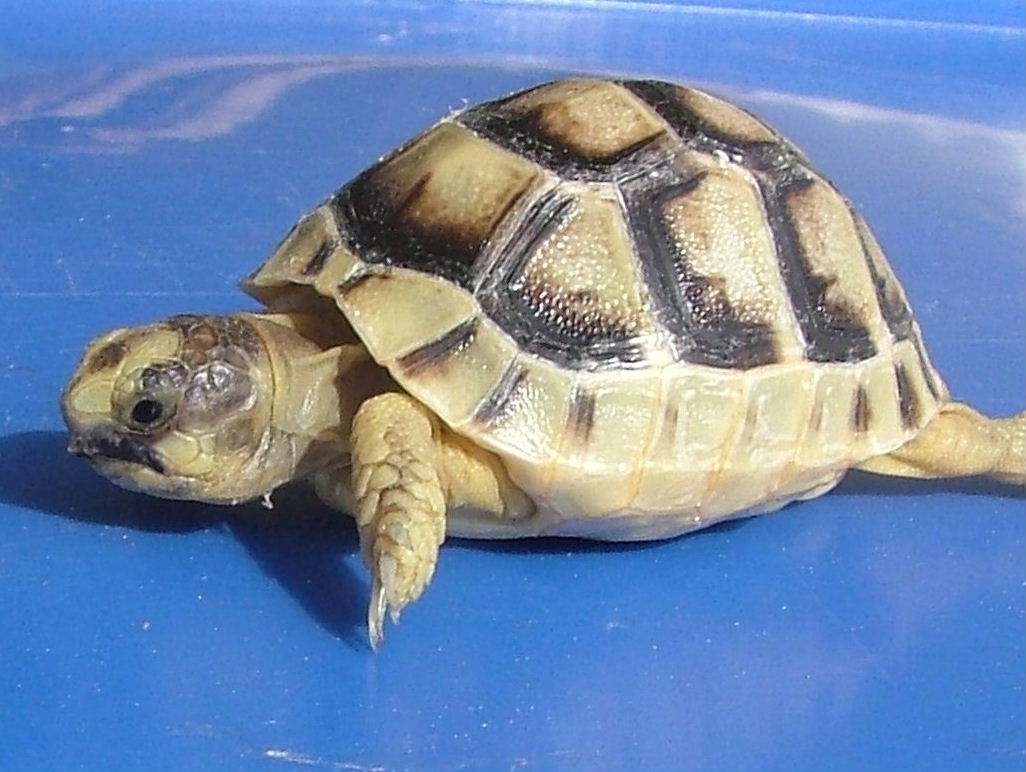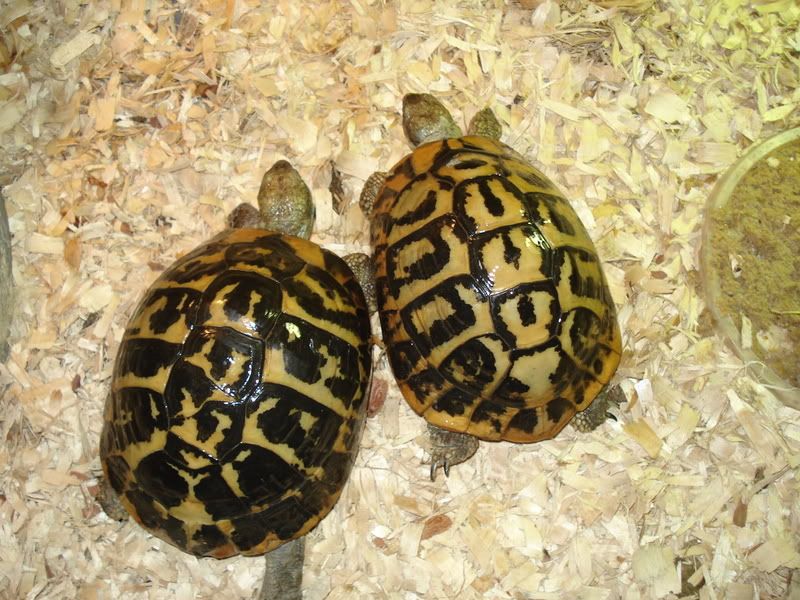This is a crazy idea that has been bouncing around in my head for some time.
Many keepers breed tortoises in hopes to offset the the capture of wild specimens to feed the appetite of the pet trade. This is a noble venture and I applaud their efforts, as it also serves to ensure the survival of these species which are often threatened in their native lands.
What if a single species could be bred in large enough quantities and adapted to survive in an environment easily created in a typical American home. This could all but eliminate the thousands of lost tortoise lives from first importation and then inadequate care once they reach their final destination in a home.
Obviously there will always be advanced keepers who enjoy the challenge of meeting the needs of an exotic tortoise. For the average joe however, those exotic needs are normally beyond their means and understanding.
In my mind the ideal domestic tortoise needs ;
Room Temperature: Around 70 degrees average Fahrenheit
Low Humidity: Typically 30-40
Small Size: maybe 6" at most full grown
Non-Picky Diet: ideally could thrive on Mazuri or ZooMed Grassland with occasional produce thrown in. (In reality this seems standard, but long term for many species this seems inadequate)
Non-Hibernating/Aestivating: This may be the trickiest of all, and I see alot of debate possible on this single issue. Many people are proposing that these seasonal cycles are crucial to tortoise keeping. Just how critical is this really, as it is NOT something I expect the average pet owner to be able to safely accommodate.
Hardy: Really tough part, so many possible species are considered "tricky" to keep.
Do any existant species fit that bill? If not what comes closest?
Egyptians seem so perfect in so many regards, yet are rare and "tricky" to keep.
Big nono to many folks, but I'm not even beyond the idea of hybridizing to create a suitable tortoise. I know many folks are strongly opposed to hybrids, but in the context of trying to bring about a possibly new "species" or breed to suit the market and save all other species I consider it a worthy notion. Hybrids can typically be stronger, benefiting from the combined and possibly limited gene pools of the parent species. Even in already domesticated animal species, out-crossing of purebreeds is necessary at times to over come the negatives of intense in-breeding.
If an ideal stock to work from could be decided upon, I would like to propose a breeding program to further the process and reinforce those positive traits that could allow a species to thrive in an American (or any other temperate for that matter) home. I realize this is a long pipe dream, and could likely not even be fully realized in my life time, but might not be a bad life-project for me.
Thanks in advance, and please cast your votes and ideas for the best stock for Testudinidae Domesticus.
Many keepers breed tortoises in hopes to offset the the capture of wild specimens to feed the appetite of the pet trade. This is a noble venture and I applaud their efforts, as it also serves to ensure the survival of these species which are often threatened in their native lands.
What if a single species could be bred in large enough quantities and adapted to survive in an environment easily created in a typical American home. This could all but eliminate the thousands of lost tortoise lives from first importation and then inadequate care once they reach their final destination in a home.
Obviously there will always be advanced keepers who enjoy the challenge of meeting the needs of an exotic tortoise. For the average joe however, those exotic needs are normally beyond their means and understanding.
In my mind the ideal domestic tortoise needs ;
Room Temperature: Around 70 degrees average Fahrenheit
Low Humidity: Typically 30-40
Small Size: maybe 6" at most full grown
Non-Picky Diet: ideally could thrive on Mazuri or ZooMed Grassland with occasional produce thrown in. (In reality this seems standard, but long term for many species this seems inadequate)
Non-Hibernating/Aestivating: This may be the trickiest of all, and I see alot of debate possible on this single issue. Many people are proposing that these seasonal cycles are crucial to tortoise keeping. Just how critical is this really, as it is NOT something I expect the average pet owner to be able to safely accommodate.
Hardy: Really tough part, so many possible species are considered "tricky" to keep.
Do any existant species fit that bill? If not what comes closest?
Egyptians seem so perfect in so many regards, yet are rare and "tricky" to keep.
Big nono to many folks, but I'm not even beyond the idea of hybridizing to create a suitable tortoise. I know many folks are strongly opposed to hybrids, but in the context of trying to bring about a possibly new "species" or breed to suit the market and save all other species I consider it a worthy notion. Hybrids can typically be stronger, benefiting from the combined and possibly limited gene pools of the parent species. Even in already domesticated animal species, out-crossing of purebreeds is necessary at times to over come the negatives of intense in-breeding.
If an ideal stock to work from could be decided upon, I would like to propose a breeding program to further the process and reinforce those positive traits that could allow a species to thrive in an American (or any other temperate for that matter) home. I realize this is a long pipe dream, and could likely not even be fully realized in my life time, but might not be a bad life-project for me.
Thanks in advance, and please cast your votes and ideas for the best stock for Testudinidae Domesticus.






